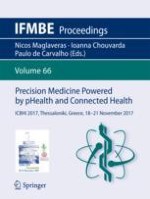2018 | OriginalPaper | Buchkapitel
Design of a Fully Automated Service to Generate an Individualized Exercise Rehabilitation Program for Adults with Congenital Heart Disease
verfasst von : R. Buys, V. A. Cornelissen
Erschienen in: Precision Medicine Powered by pHealth and Connected Health
Verlag: Springer Singapore
Aktivieren Sie unsere intelligente Suche, um passende Fachinhalte oder Patente zu finden.
Wählen Sie Textabschnitte aus um mit Künstlicher Intelligenz passenden Patente zu finden. powered by
Markieren Sie Textabschnitte, um KI-gestützt weitere passende Inhalte zu finden. powered by
